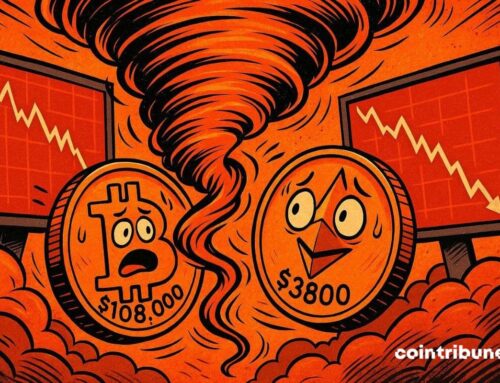Does Valero’s Recent 3% Dip Signal Opportunity for Investors in 2025?
October 22, 2025
If you are sitting on the fence about Valero Energy, you are definitely not alone. The stock has drawn plenty of attention lately, bouncing through some near-term turbulence yet still carrying an impressive longer-term track record. In just the past week, shares have slipped 2.8%, and zooming out to the past month, the stock has shed 3%. Take a step back, though, and the story shifts. Valero is still boasting a 28% return since the start of the year and a massive 400.2% gain over the past five years.
Much of this performance traces back to big picture moves in the energy markets, and recent headlines keep fueling the debate. With the world watching shifting oil supply dynamics and policy decisions that can redraw the sector’s landscape overnight, investor sentiment toward refining giants like Valero has remained especially sensitive. Not every news bite links directly to stock surges or slides, but overall, these factors color how investors think about risk and future reward.
Of course, no discussion about Valero is complete without talking numbers, and that starts with its valuation. On our scoring system, where a company gets a point for each of six checks it clears as undervalued, Valero racks up a 2. Maybe that seems underwhelming, but valuation isn’t just about the total score. In the next section, we will break down exactly what goes into each valuation method, and stick around until the end for a smarter approach to figuring out what Valero is actually worth.
Valero Energy scores just 2/6 on our valuation checks. See what other red flags we found in the full valuation breakdown.
The Discounted Cash Flow (DCF) model is a tool for estimating a company’s true value by projecting its expected future free cash flows and then discounting them back to today’s dollars. It allows investors to look ahead, estimate the cash Valero may generate, and determine what those future billions are worth in today’s terms.
For Valero Energy, the current Free Cash Flow sits at $3.35 billion. Analysts forecast that the company’s FCF will continue to grow in the coming years and reach $4.41 billion by 2029. The next five years are based on analyst estimates, while longer-term projections are extrapolated to provide a ten-year view. These longer-term estimates suggest steady cash generation, with projected annual Free Cash Flows remaining above $4 billion for much of the next decade.
Based on this model, Valero’s intrinsic value is calculated at $275.64 per share. With the stock currently trading at a 42.8% discount to this value, the analysis suggests that shares are significantly undervalued relative to the company’s future cash-earning potential.
Result: UNDERVALUED
Our Discounted Cash Flow (DCF) analysis suggests Valero Energy is undervalued by 42.8%. Track this in your watchlist or portfolio, or discover more undervalued stocks.
The Price-to-Earnings (PE) ratio is one of the most widely used metrics for valuing profitable companies like Valero Energy. It measures how much investors are willing to pay for each dollar of current earnings, making it a simple but effective way to compare valuation among established businesses.
What counts as a “normal” PE ratio can vary, depending on a company’s expected earnings growth and the risks it faces. Fast-growing companies or those with steadier, lower-risk profits often justify higher PE ratios. In contrast, slower growth or higher risks push fair multiples lower.
At the moment, Valero trades on a PE ratio of 64.5x, which is much higher than the oil and gas industry average of 12.9x and the peer average of 25.6x. However, direct multiple comparisons can sometimes be misleading, as they do not account for differences in profit growth, market dominance, or risk profiles.
This is where Simply Wall St’s “Fair Ratio” comes in. This proprietary benchmark attempts to capture a fair PE multiple for Valero by factoring in the company’s unique blend of earnings growth, profit margins, industry context, market capitalization, and risk factors. Because it is tailored to the stock, the Fair Ratio provides a more accurate gauge than simply comparing Valero to broad industry or peer averages.
Valero’s Fair Ratio is calculated at 23.5x, while its actual PE is up at 64.5x. This gap suggests the stock is currently pricing in far more growth or less risk than fundamentals support, so it appears overvalued on this metric.
Result: OVERVALUED
PE ratios tell one story, but what if the real opportunity lies elsewhere? Discover companies where insiders are betting big on explosive growth.
Earlier we mentioned that there is an even better way to understand valuation, so let’s introduce you to Narratives. A Narrative is a simple, powerful way of capturing your perspective: a story you build around a company based on your assumptions for fair value, future revenue, earnings, and margins. Instead of just looking at the numbers, Narratives connect a company’s business story to a concrete financial forecast and then translate that forecast into a fair value estimate.
Narratives are accessible tools on Simply Wall St’s Community page, used by millions of investors. They make it easy to decide when to buy or sell by directly comparing your Fair Value to the current price. Narratives remain flexible and up to date, as they update automatically when new information, such as news events or earnings releases, arrives. This ensures your story and valuation evolve along with the company.
For example, when it comes to Valero Energy, different investors may have very different takes. Recent Narratives for the stock range from very bullish, with targets around $181 based on robust profitability and sector tailwinds, to cautious or bearish, with values closer to $133 reflecting concerns over earnings volatility and regulatory challenges. Narratives provide a personalized, dynamic framework to ground your investment decisions in your own research and market outlook.
Do you think there’s more to the story for Valero Energy? Create your own Narrative to let the Community know!
This article by Simply Wall St is general in nature. We provide commentary based on historical data and analyst forecasts only using an unbiased methodology and our articles are not intended to be financial advice. It does not constitute a recommendation to buy or sell any stock, and does not take account of your objectives, or your financial situation. We aim to bring you long-term focused analysis driven by fundamental data. Note that our analysis may not factor in the latest price-sensitive company announcements or qualitative material. Simply Wall St has no position in any stocks mentioned.
Companies discussed in this article include VLO.
Have feedback on this article? Concerned about the content? Get in touch with us directly. Alternatively, email editorial-team@simplywallst.com
Terms and Privacy Policy
Search
RECENT PRESS RELEASES
Related Post




